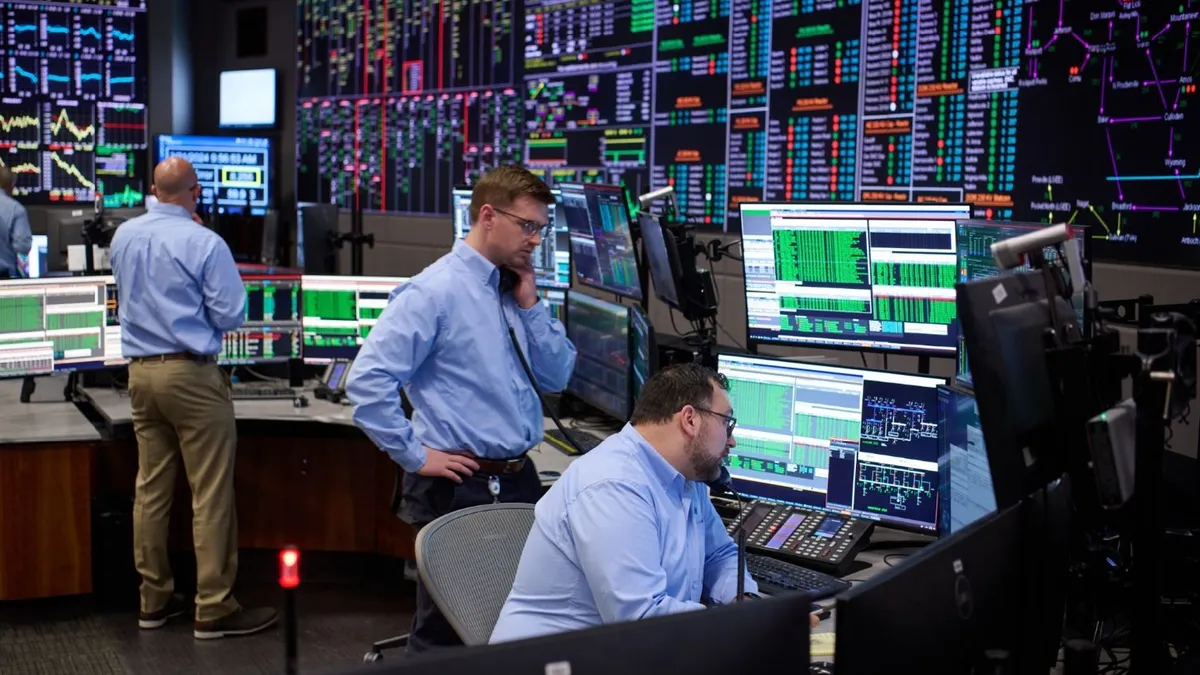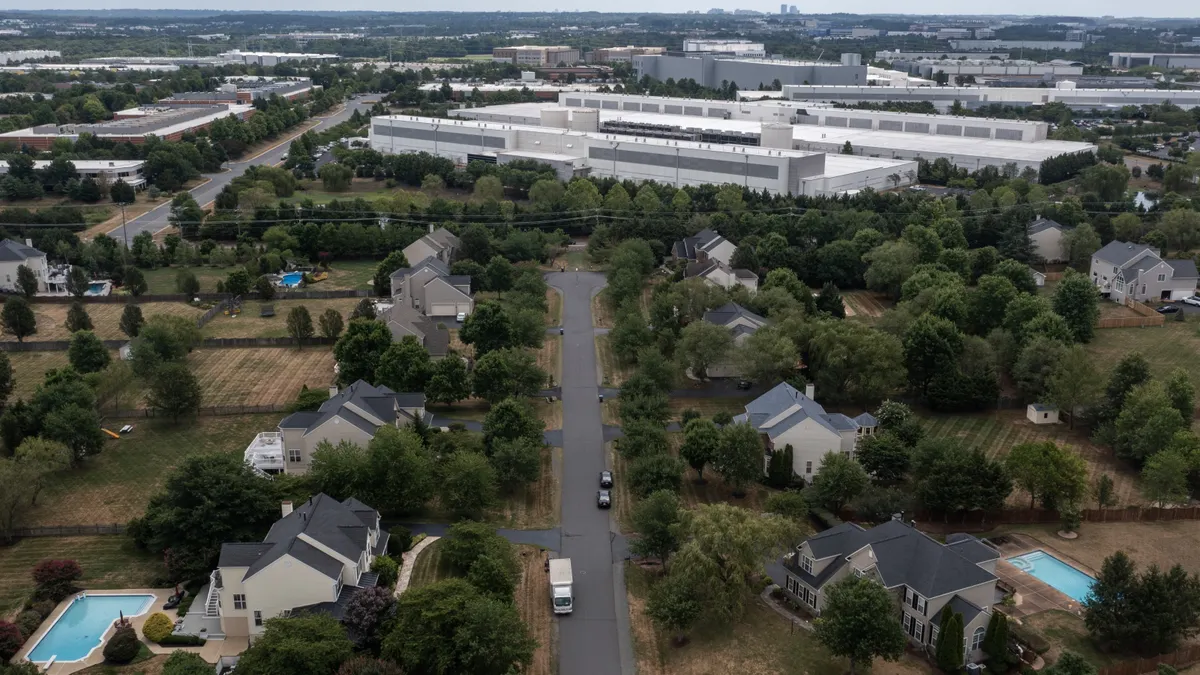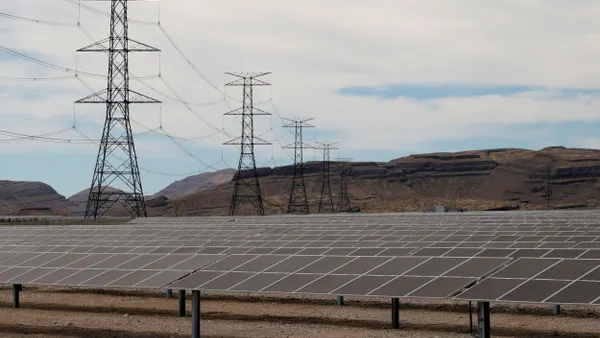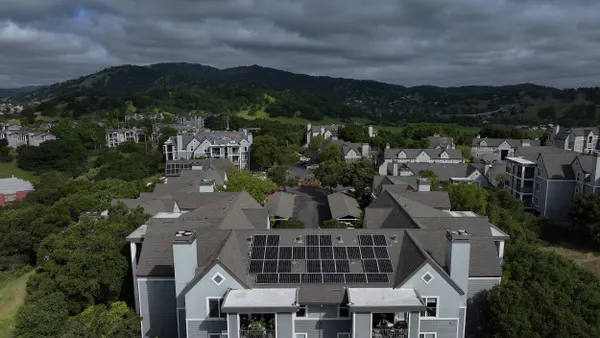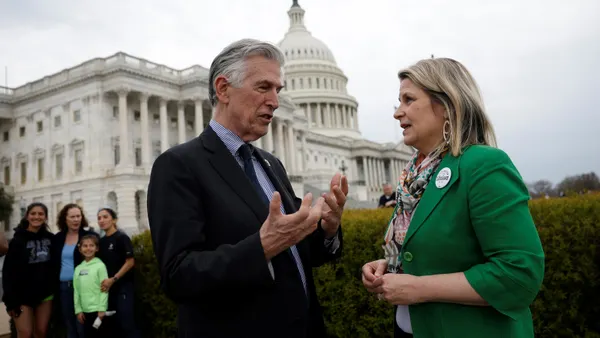Dive Brief:
-
Overall renewable PPA prices have increased 11.5% year-over-year since the first quarter of 2021 as demand for renewable energy continues to grow, according to an analysis from LevelTen Energy's renewable energy marketplace.
-
Wind-only PPA prices dropped 6.2% to an average of $30.19 per MWh during the first quarter of 2021, according to LevelTen, while solar rose 2.6% to $31.36 during the same time period. Both resources maintain long-term upward trends despite some region-specific declines and the one-quarter drop in wind prices, which ended a four-quarter streak of increase, according to Rob Collier, vice president of developer relation for LevelTen Energy.
-
Prices seem likely to increase further, Collier said, but a new variable has entered the mix: a growing number of PPA purchases have begun to examine the environmental and social impacts of their investments more closely.
Dive Insight:
PPA price trends may be a little bumpy in some regions, particularly for wind PPAs, but demand for renewable energy shows no signs of slowing, according to Collier.
Wind PPA prices dipped in the first quarter of 2021 in what appears to be a reaction to the extension of the production tax credits, Collier said, although a lack of PPA activity in California may have skewed the nationwide numbers as well. Permitting difficulties in California, typically one of the higher-priced markets for renewable energy, have caused wind PPAs in that state to slow to a trickle. This past quarter, Collier said, California had so few new wind projects that the state had to be excluded from the PPA price index, potentially reducing that resource's average price.
For both solar and wind, Collier said, demand for renewable PPAs continues to exceed supply.
"Particularly in some of the most active markets for corporate procurement like PJM, there's still this pervasive imbalance between supply and demand," he said. "Corporate buyers are very aggressively procuring PPAs in places like PJM, and they're doing so because they have mandated or self-imposed clean energy goals, and we are still seeing a shortage of projects able to meet demand."
Much of this imbalance is related to ongoing challenges with permitting and grid interconnection, Collier said. With some jurisdictions actively trying to make these projects more difficult to permit, and others simply falling behind on reviews due to the volume of applications, Collier said permitting and interconnection issues continue to delay projects — some possibly for years — which has in turn driven costs up for developers who pass those costs on to purchases.
"Those are creating a bottleneck on competitive supply," Collier said, although he said there is as yet no sign that the delays and associated costs have begun to erode interest in renewable energy, which only seems to be increasing.
However, corporate buyers appear to be raising the bar for PPA developers, Collier said, and developers have begun to respond in kind. Since mid-2020, Collier said LevelTen has observed a growing number of corporate buyers asking developers more in-depth questions about their labor standards, pay equity and workforce diversity. Buyers have also shown an increased interest in local environmental impacts, such as whether a PPA would cause sensitive habitat to be cleared.
In response, a survey of 77 developers by LevelTen found that 68% of developers said they have begun tracking their performance on these social and environmental measures.
While some of the specific expectations may change, Collier said this growing interest in social justice among corporate buyers seems to be here to stay. Although apparently spurred by the Black Lives Matter protests last summer, he said this growing interest in local and social issues seems like a natural outgrowth of what drives corporate buyers to pursue PPAs in the first place.
"Corporates are increasingly asking themselves how they can incorporate themes that were uncovered by those protests to make even better renewable energy procurements," Collier said. "It was a natural marriage of environmental and social justice, what we saw in the Black Lives Matter protests and how that was resonating in corporate boardrooms with carbon commitments. They're very much linked, and I think they're here to stay."



